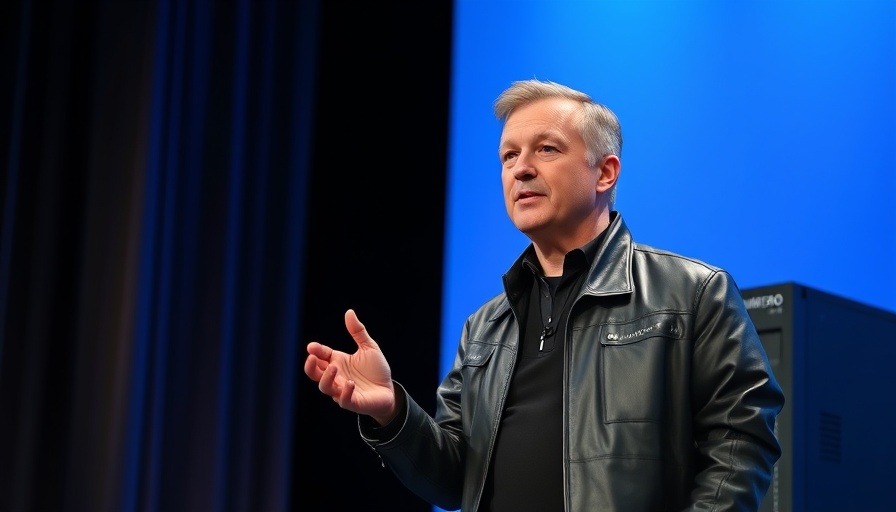
Understanding Nvidia's Bold Shift Amidst DeepSeek's Emergence
Nvidia has long been synonymous with cutting-edge graphics processing units (GPUs) that power the world's most advanced AI models. However, the game is changing as DeepSeek's new open-source models, particularly V3 and R1, are stirring the pot in Silicon Valley. Released in January, these models challenge long-held beliefs about whether high-performance AI can truly exist without the hefty price of expensive GPU stacks. Nvidia, in a recent report, nonetheless displayed confidence as it revealed its latest architectural innovation: Blackwell.
Why Blackwell is More Important Than Ever for AI Inference
CEO Jensen Huang stated that Blackwell is tailored to manage a new era of AI workloads efficiently. With the AI landscape evolving, characterized by a rapid shift towards reasoning AI, the demand for compute power has skyrocketed. In his perspective, reasoning AI techniques require significantly more computational resources than traditional models. This demand might have surged in response to the introduction of DeepSeek, which underscores the urgent requirement for robust AI infrastructure.
The Compute Need: How DeepSeek is Reshaping the Market
The recent growth in demand for compute highlighted by Huang is impressive. Nvidia's quarterly earnings, which noted a staggering 77.9% increase in revenue to $39.33 billion, indicates that companies are in urgent search of enhanced AI capabilities. DeepSeek's models reveal that they require up to 100 times more compute power per task compared to traditional AI systems. This frenzy for more computing power is a clear verification of how AI is transitioning beyond simple inference models to more sophisticated reasoning models.
What the Future Holds: Nvidia's Position in an Evolving Landscape
The rapid evolution from traditional perception and generative AI into reasoning AI signifies a major paradigm shift. Blackwell is constructed to facilitate this transition seamlessly, providing users with the capability to navigate from pre-training to inference with unprecedented ease. Huang's insights suggest that this shift will shape the data centers of the future, which will become 'AI factories' dedicated to training and deploying AI models. Such transitions reflect broader technological trends which not only affect Nvidia but will inevitably alter the entire semiconductor industry.
A Look Beyond: Implications for the AI Industry
As developments unfold, there’s rising speculation about how Nvidia will continue adapting in light of this surge in reasoning AI. The next generation of AI applications—autonomous agents capable of executing complex tasks—promises to redefine operational models across industries. This is a pivotal moment not only for Nvidia but for the future trajectory of AI technology, especially as diverse nations are now looking to build their own ecosystems tailored to their specific needs.
Final Thoughts: Why Understanding Nvidia's Moves Matters
As AI continues to dominate discussions in tech, observing Nvidia’s strategies offers profound insights. The competition from emerging models like DeepSeek illustrates both challenges and opportunities in the AI landscape. For enthusiasts and professionals, following Nvidia's evolution represents more than just hardware development; it’s about understanding the core shifts shaping our technological future.
Stay informed about advancements in AI technology by subscribing to leading news sources and becoming an active participant in discussions around cutting-edge developments.
 Add Row
Add Row  Add
Add 




 Add Row
Add Row  Add
Add 

Write A Comment